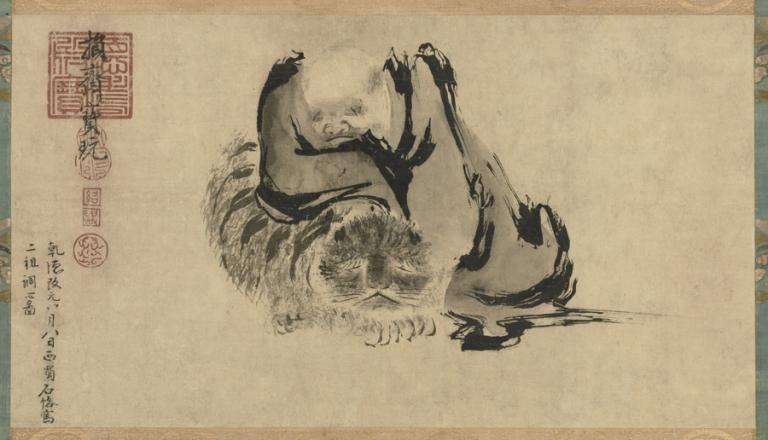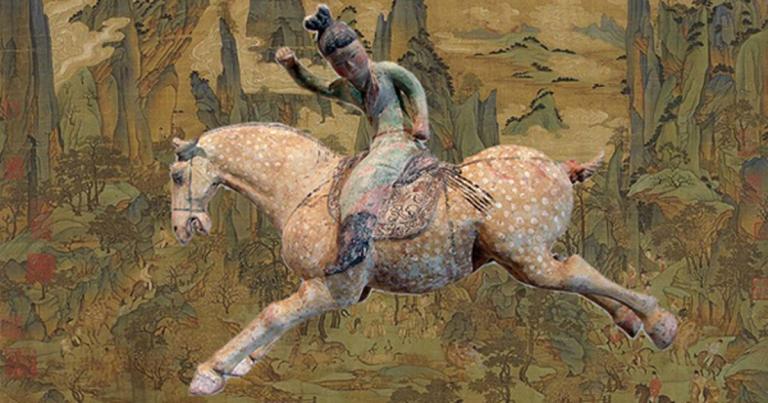Figure Painting in the Five Dynasties
4 min readFigure painting at the time revealed more of people’s daily life. Along with the development of economy, more and more paintings were created to depict the life of populaces. Custom paintings for festivals and celebrations attracted painters’attention. The quiet and relaxed life of nobles and scholar-bureaucrats also became a subject matter of painting works. As the rulers of Song dynasty were fatuous and incapable and appointed many treacherous court officials, there were many paintingsthat reflected the faithful and frank officials struggling against the treacherous authoritative officials. At that time, more conflicts among different nationalities and chaos caused by wars had thrown people into the abyss of affliction. And relevant subject matters also became popular among painters. Figures in Buddhist and Taoist paintings continued to develop and adopted new features. As the rulers vigorously supported Taoist painting, it flourished as never before. Hence masterpieces like Scroll of Eighty Seven Immortals and The ceremony Orchestra of Taoist Worshipers came into being and were left to us today.

Important painters of the time were as follows:
Li Gonglin, the creator of Without Helmet and Portrait of Vimalakirti. The former painting depicts a story of Guo Ziyi. In the first year of Yongtai in Tang dynasty (765), minorities from Tubo (Tibet today) and Huihe(Xinjiang today) united to invade Tang territory.A famous general of Tang dynasty named Guo Ziyi was enclosed in Jingyang. However, he faced the danger bravely and came to Huihe army and persuaded them to fight against Tubo. The painting recorded the scene and revealed people’s expectation of a hero making vigorous efforts to turn the situation when facing enemies. The later was a portrait of Vimalakirti, the embodiment of Buddhist thought. Vimalakirti was portrayed as a scholar-official who sat on the couch deep in thought. The figure was lifelike and vivid.
Zhao Ji was specialized in figure painting. His painting Listening to the Qin depicts a man in Taoist costume playing musical instrument under a big tree. Infront of him, on his left side and right side there was respectively a listener sitting and listening quietly.A1l figures seemed quite absorbed in the music. The depiction was refined and delicate. The color was distinct and elegant. Some scholars pointed out that the music player was actually the painter himself,i.e.
Emperor Huizong of Song dynasty; and among the listeners was his favorite court official Cai Jing. Therefore the painting was also considered as portrait. His other works left to us today include copy works of Court Ladies Preparing Newly-Woven Silk. and Spring Outing of the Lady in Guoguo Tang Court by Zhang Xuan in Tang Su Hanchen was from either Bianliang (Kaifeng in Henan today) or Qiantang (Hangzhou in Zhejiang today). He was a member of both Xuanhe Art Academy of Northern Song and Shaoxing Art Academy of Southern Song. His painting style followed Liu Zonggu and he was good at painting Buddhist and Taoist figures, court ladies and especially children. He could manifest the children’s simplicity and vivacity. His works left till today include Playing with Babies in Autumn Courtyard, Five Children Playing Auspicious Characters Babies Playing Games, etc.

Li Song was from Qiantang(Hangzhou in Zhejiang province today). He was born in a family of populace and once worked as a carpenter. Later he was adopted by Li Congxun,a painter in the Art Academy and started to learn painting. He practiced painstakingly and finally became a famous painter. He specialized in painting figures, customs, flowers and fruits and architecture painting. His representative work was The Peddler, which depicts the scene when a peddler shouldered his goods to a village and many women and children gather around him to buy his goods. One can see the jollification and sense the full-bodied taste of life.
Liang Kai was born in Dongping (in Shandong today). He was a member of the Art Academy during the Jiatai years (1201-1204) of Southern Song dynasty. He was bold and unconstrained in personality and fond of drinking very much. He even hung the Emperor’s reward,a gold belt to tree and refused to take it. People called him Crazy Liang. He had followed Jia Shigu, Li Gonglin in painting and excelled in Buddhist and Taoist painting, paintings of ghosts, figures, landscapes, flowers and birds. He was good at line drawing and ink-splash way of painting. His style varied and his representative work was Li Bai Walking and Chanting Poems, which depicts Poet Li Bai when he was chanting poems. The figure was shaped accurately with smooth and simple lines and the painting was full of expressive force. Immortal Painted in Ink-splash Way depicts a drunk immortal walking in a staggering way. Although the painting skill was simple and concise, the figure was shaped accurately and the immortal’s squiffy expression was more than vivid.








